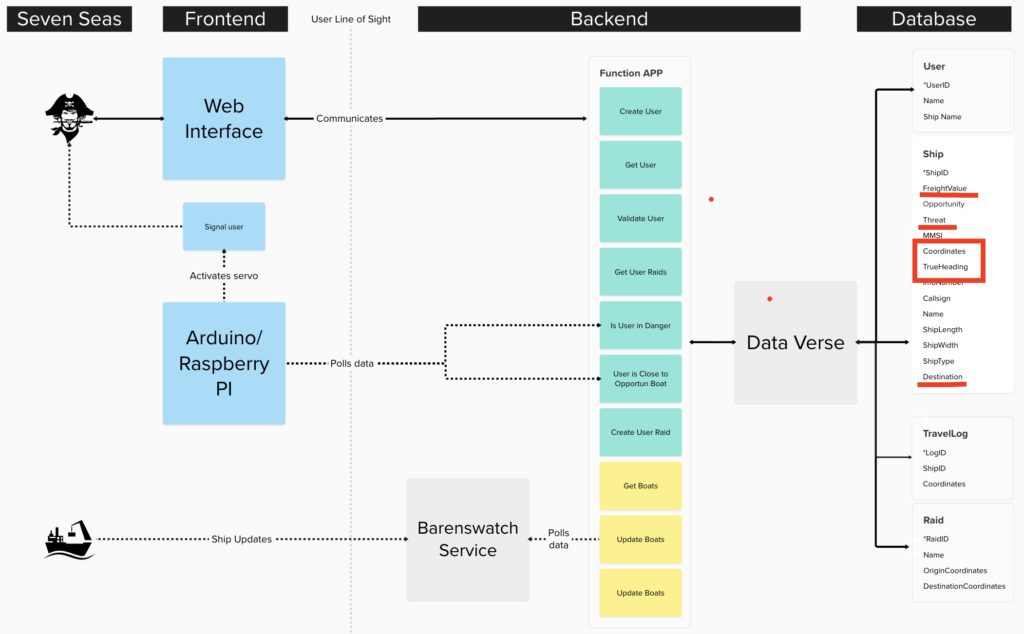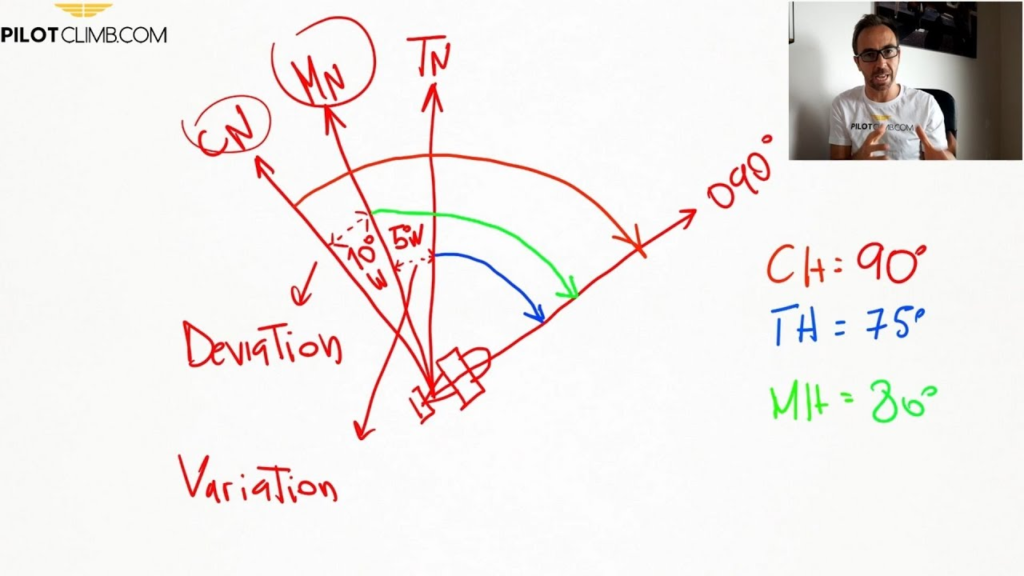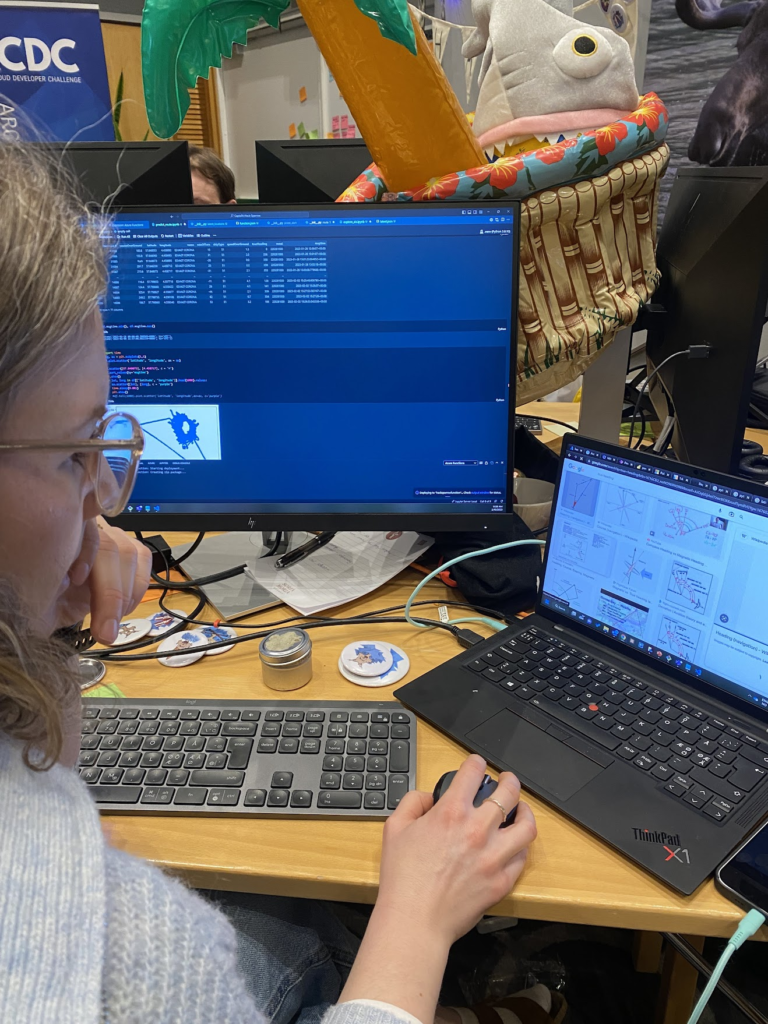The waters run deep and dark when you are at sea. This is why intel like maps, a spyglass and knowing the tides help. To give our pirates an advantage we crawl barenswatch.no for other ships location. But, just as in dogeball, it is not enough to know where something is, you need to know where it is going and when you need to be there to intercept. So how do we calculate the best opportunities and how to intercept them?
Step 1: Crawl and Hijack Valuable Data 🦀
From the system diagram we see our Functions App communicates with the Braenswatch API and stors all boats data including current location. We poll this information several times giving us multiple data points not only for ballast and weight, but also for speed, location and direction (this will be important later).

For ease of use while creating the service we compiled all the data using Power BI Dashboards to see what we were working with. The dashboard can also be used to help captains understand the state of the seven seas, although we appreciate that more data is not necessarily better data. It depends on how you visualize, precent and timing of when to precent data to you user.
Step 2: Knowing which Opportunities to Strike 🏆
From the ships length, type and destination we can estimate its value. Slow moving ships heading for freight docs are ripe for looting, fast moving ships heading for a dry dock are empty and better left alone. For the sharp eye you have also spotted we have a Threat flag in or model, this is for marking known pirates, intercepters and the fuzz of the seven seas. Once again referencing to Sun Tzu: You always win the wars you never fight (dont search this quote).

If we decide that this opportunity is ripe for plundering, we look at its course and if it is feasible to intercept based on our current course. Good opportunities are heavy, slow moving ships. Bad opportunities are war ships of any kind or any opportunity in the vicinity of a war ship.
There is also a certain Goldilocks of opportunities: Based on your own vessel, you do not want to attack another ship that is too large, since it will be a harder fight, or too small, since it carries less booty. We can use the dashboard to visually find the opportune boats and use this investigation to write code that targets these boats automatically.

When we flag ships that are both opportune and not adjacent to warships we plot paths to figure out where they are going in relations to our course.
Step 3: Using Advanced Trigonometry to Pinpoint your Enemy 🎯
Youtube can teach you the basics about how to calculate a ships heading based on longitude, latitude, direction, true north and the course deviation.

True north will change depending on where on the globe you are positioned, so for intercept courses it is paramount to get this stuff right. You want to be at the place where your target ship will be, not where they have been. And you want to be there before they get there, not to ride up after them and trailing them forever. This is where we use the latitude, longitude, direction and speed from earlier and _try_ to plot the path of the ships. I stress try because Solveig just looked at Sebastian with the “do you mind not being an idiot” when he asked how se was doing it and if it was done. Then just sort of sigh’ed and continued clicking keys. So it works, trust us.

For our challenge we also need to estimate if it is a viable option to change our current corse to intercept the opportunity. For all business cases there is a cost/effect probability calculation. Fo us this depends on added time to destination with deviation and added length of trip, both of which adds to the total cost of provisions and consumables like petrol.
Step 4: Plot Optimal Course for Interception 🏴☠️
Finally when we have a list of opportune targets, we know which targets will be adjacent to our planned course form A to B we plot intercept maneuvers. Which, is a topic for another blog post – because this part is most certainly done… Trust us… 🤞🤞🤞
